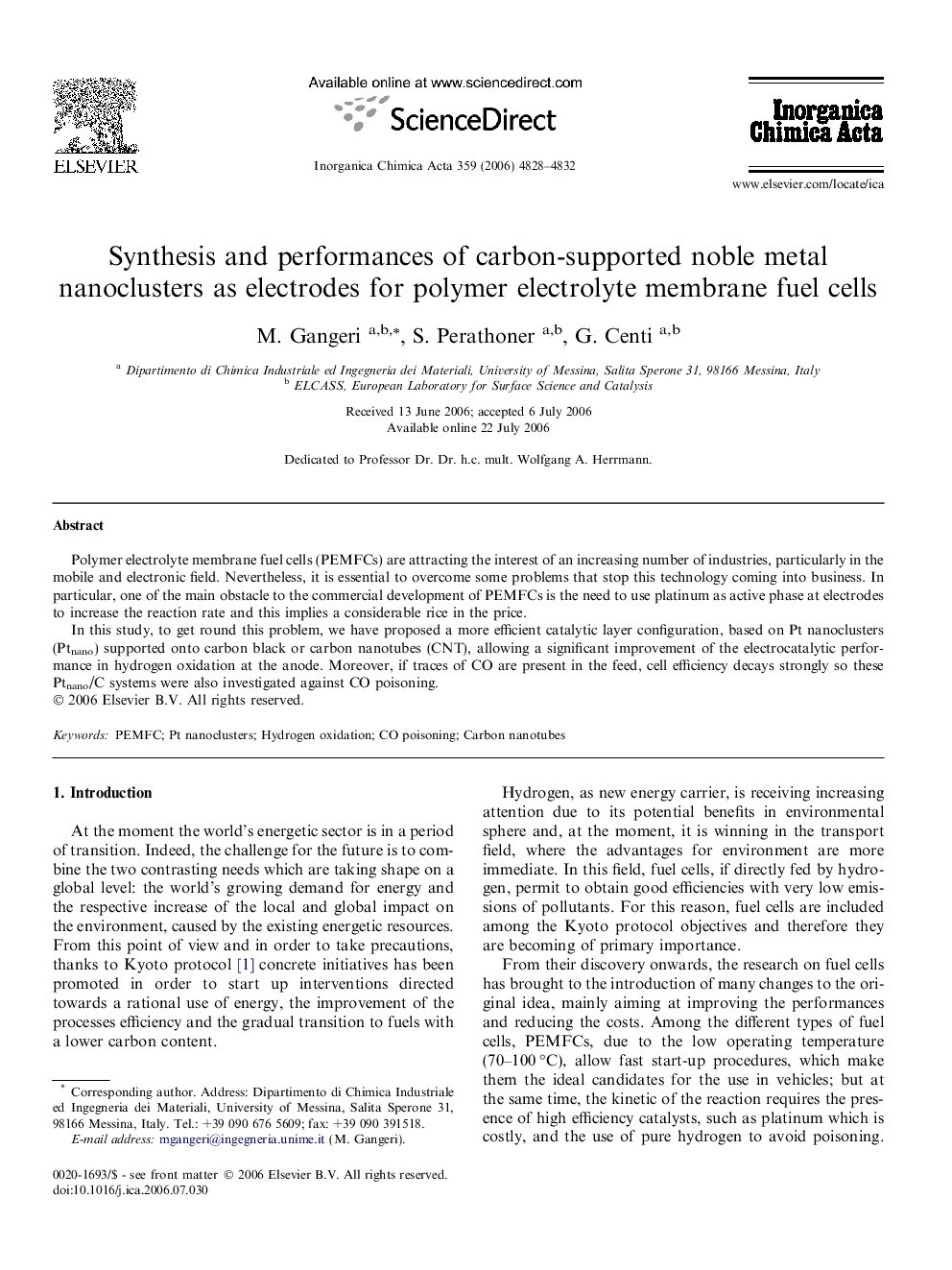| Article ID | Journal | Published Year | Pages | File Type |
|---|---|---|---|---|
| 1310957 | Inorganica Chimica Acta | 2006 | 5 Pages |
Polymer electrolyte membrane fuel cells (PEMFCs) are attracting the interest of an increasing number of industries, particularly in the mobile and electronic field. Nevertheless, it is essential to overcome some problems that stop this technology coming into business. In particular, one of the main obstacle to the commercial development of PEMFCs is the need to use platinum as active phase at electrodes to increase the reaction rate and this implies a considerable rice in the price.In this study, to get round this problem, we have proposed a more efficient catalytic layer configuration, based on Pt nanoclusters (Ptnano) supported onto carbon black or carbon nanotubes (CNT), allowing a significant improvement of the electrocatalytic performance in hydrogen oxidation at the anode. Moreover, if traces of CO are present in the feed, cell efficiency decays strongly so these Ptnano/C systems were also investigated against CO poisoning.
Graphical abstractWe propose in this study a more efficient catalytic layer configuration at the anode of a polymer electrolyte membrane fuel cell, based on Pt nanoclusters supported on carbon black or carbon nanotubes, allowing a significant improvement in the efficiency towards H2 electro-oxidation together with a much better resistance against CO poisoning.Figure optionsDownload full-size imageDownload as PowerPoint slide
